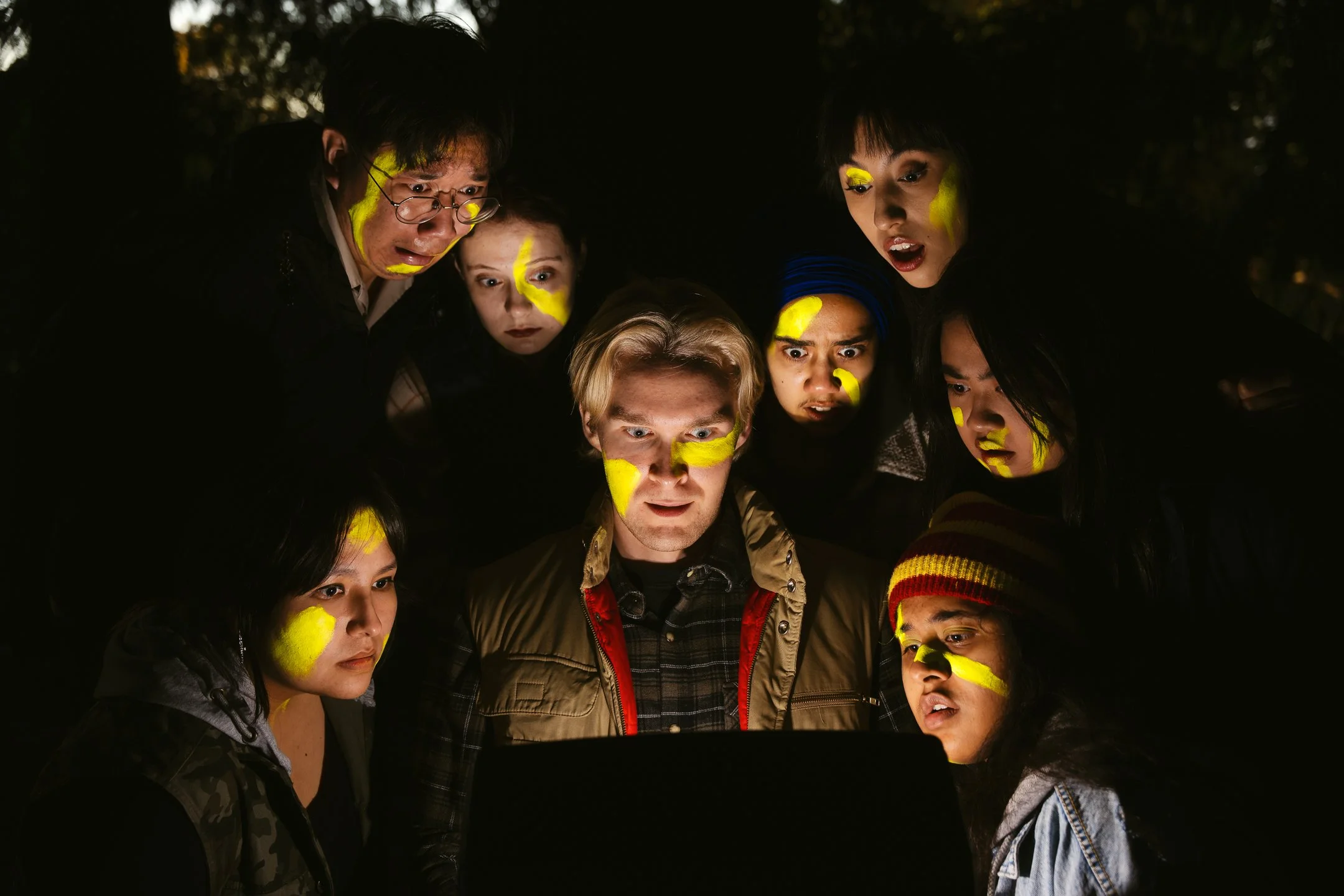#FlashBackFringe: 'in several times' dances between space, memory and the body.
/When the performers first synchronize their choreography for during in several times, the show begins its sensory climax. The three bodies on stage are redemonstrating movements we’ve seen before, but the choreography danced in unison is more powerful and intense, a building momentum.
There is a blanket at the back of the stage, precisely decorated with an arrangement of items: a pile of sugar, strawberries, bread and kettle. The bodies carve space together. The kettle begins to boil. A body breaks from the flow of movement, walks over to the steamy kettle, gently rests on their knees. The crescendo of pouring water is audible in the slightest sense.
I think of the comforts associated with that sound, the filling of a cup. I think of my parents sitting every night with cups of tea. I think of myself alone, clutching a cup for solace while watching the rain. In this space, it feels as though I am sharing a memory with strangers, watching strange movements. Yet in the unknown of this sharing, there is a strong feeling of connect, a distinct commonality in it all.
The word that best describes in several times is intertwingle— A verb, meaning to interconnect or interrelate in a deep and complex way. The multi-disciplinary work was created by director, choreographer and performance artist Linnea Gwaizda, along with the carefully selected ensemble of Marc Arboleda, Kayla De Vos, Mahaila Patterson-O’Brienon and onstage sound designer Matthew Ariaratnam.
The show explores concepts and constructs of memory, examining how we share memories and how we exist in memory spaces. How even as individuals who experience a wide range of things, our memories intertwine with our surroundings, creating uncanny connections and profound commonalities.
Before the work was showcased during the 35th Vancouver Fringe Festival, in several times was first presented form as Gwaizdas masters thesis at SFU. She was inspired to create the piece while on a trip to her late grandparents’ home in Europe. They died when Gwaizda was young, but she still holds many childhood memories from their home in Quebec.
“It was a place of beautiful tradition, warmth and a connection to the land which they were removed from. When going back to their home country of Poland, and retracing those steps, there was a sense of peculiar familiarity,” says Gwaizda.
”Yet this was a space that I had never been to before. Which got me thinking: where is home? What is a home? When have we arrived in our ancestry?”
in several times doesn’t follow narrative in a traditional sense, existing in a more fluid, dreamlike choreographic space.Through gestures, spoken word, sounds and props, the show creates a visceral recollection of events, emotions, and sensory experiences.
The plethora of objects on stage recall specific sensory memories from Gwaizda’s grandparents’ house. Senses are triggered in this piece each time the performers place ingredients on stage, or when field recordings from Quebec ring out over speakers.
“Smell and taste are a huge part of memory,” says Gwaizda. “I remember the tomatoes and cucumbers being picked from the garden.”
By bringing in taste and texture from other specific, personal places, Gwaizda hopes to establish a personal connection with the audience. At one point in the piece, a performer moves to the arrangement of objects up stage and grabs a handful of sugar from the pile, only to let it fall through her hands in a steady stream. We watch the sugar fall through fingertips, listen to the performers describe the architecture of a specific room, all while what sounds like recordings of creaking floors play through the speakers
It doesn’t matter what the sound actually is, or even if that white pile was sugar, salt or another substance. These specific memories are not mind to understand or analyze, I am simply meant to experience them. Yet there is a familiarity in what each performer is presenting— my own memories surface through their sounds and smells. Each click reminds me of how the wooden gate sounded when my father returned home from work, and through scent I am reminded of my grandmother’s laundry detergent.
Having worked in the past with many of the artists involved in this project, Gwaizda wanted her collaborators to have a connection to the piece. She feels her choreography was somewhat collaborative due to her personal connections.
“ I mapped out a memory, to create a pathway and use that as a physical map that creates a choreography. This work seemed like an invitation to share, and was an attempt to create a space on stage that feels like a memory.”
As the piece comes to a close, Gwaizda comes out on the stage, and starts reading a text from a journal, or maybe a better word for it would be a diary. The words are intimate to certain people, places, sense, experiences, memories. Whether tethered to her grandparents or other figures, the text is vulnerable, familial and comforting.
As Linnea reads and the dancers respond, I have a strong awareness of everyone else in the room. We are all here sharing space and memory in the present setting, but the act of internal recollection is most likely occurring. I wonder if anyone else is reminded of their childhood home, or their favourite meal or the smell of their grandmothers perfume. Either way, I feel embraced by shared space and experience, a connection to strangers and a strong craving for a bowl of my fathers lentil soup from the red ceramic pot on the stove.







